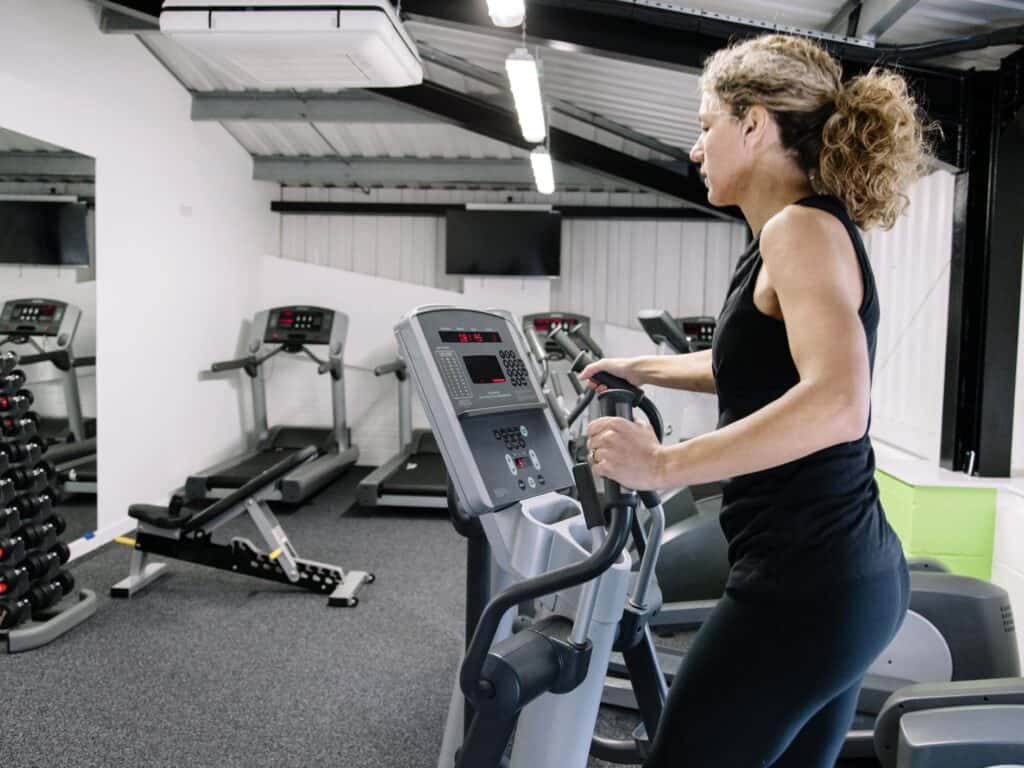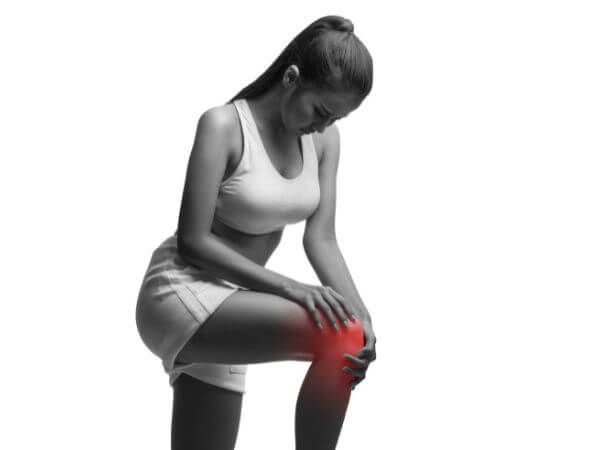Understanding the Impact of Exercise on Bad Knees
Many individuals face the challenge of maintaining an active lifestyle while dealing with knee pain. Certain exercises, particularly those that involve high impact, can exacerbate knee problems. Activities like running or jumping place considerable stress on the knee joint. This added pressure can lead to increased pain and discomfort. Therefore, finding gentler alternatives becomes crucial for those with knee issues. The question then arises, is an elliptical good for bad knees? Low-impact options, such as ellipticals, present themselves as a potential solution. These machines offer a way to exercise without the harsh jolts associated with high-impact activities.
Exploring low-impact options is essential for people seeking to exercise without worsening their knee pain. High-impact activities can create repetitive stress on the knees, which is counterproductive for individuals with existing conditions. In contrast, low-impact exercises, like using an elliptical, offer a more cushioned and supportive way to stay active. These activities minimize the jarring movements and stress on the knee joint. It is important to consider the potential of the elliptical for providing a safe and effective workout that caters to the needs of individuals with sensitive knees. The search for the right type of exercise is critical when managing knee pain.
Cross Trainer vs. Other Cardio Options: A Comparative Look
When considering cardio options, it’s essential to understand how different machines impact your joints. Treadmills, for example, involve high-impact movements that can exacerbate knee pain. Running or walking on a treadmill places significant stress on the knees. Stationary bikes, while lower impact, primarily target the legs in a cycling motion. This can sometimes still cause discomfort in individuals with specific knee issues. An elliptical machine stands out due to its unique, low-impact design. It allows for a smooth, gliding motion where the feet never leave the pedals. This greatly reduces the impact on your knee joints, therefore it is a better choice for some. This is a significant factor for those wondering if an elliptical is good for bad knees. The elliptical provides a full-body workout and the movement is continuous, without the jarring stops of other cardio equipment. It engages both the upper and lower body simultaneously, promoting efficient calorie burning and muscle engagement while minimizing stress on your joints.
The benefits of using a treadmill are that it can help you improve your cardiovascular fitness, however the potential for knee stress exists. Biking can target specific leg muscles, but it may not be the best option if your knees are already painful. The elliptical’s motion is designed to be smooth and fluid, reducing the jarring and impact associated with running. This aspect can help those with sensitive knee joints. It helps in maintaining good cardiovascular health without adding unnecessary stress to the knees. While each machine offers unique advantages, for individuals seeking a gentler cardio workout that is low-impact, the elliptical is a better option. Many people find that an elliptical is good for bad knees and that they can sustain an exercise routine that might otherwise be too painful. Choosing the correct cardio equipment will increase the chances of a consistent workout routine. The low-impact nature of the elliptical is the reason why it’s a great consideration for someone dealing with bad knees.
Considering other aspects, like stride length, can be important when using an elliptical. The adjustable stride length can accommodate various body sizes and preferences. This is important for a comfortable workout and to promote correct biomechanics. Ellipticals are made to offer diverse workout programs, including interval training and varied resistance levels. This can be helpful for individuals looking to diversify their exercise routines and improve overall fitness. For anyone concerned about knee pain, the elliptical is a good option. It provides an effective and low-impact way to workout and stay fit.
How to Use an Elliptical Machine Correctly to Minimize Knee Stress
Proper usage of an elliptical is crucial for those with knee pain. To minimize stress, begin with correct posture. Stand upright. Avoid leaning too far forward. Keep your core engaged. This will stabilize your body. Ensure your shoulders are relaxed. Do not hunch. Maintain a neutral spine position throughout your workout. These points are important when asking is an elliptical good for bad knees. Pay close attention to resistance levels. Start with low resistance. Increase gradually. This allows your knees to adapt. It prevents overexertion. The machine’s stride length is another factor. Choose a length that feels natural. Avoid overextending your legs. This can put strain on the knees. Aim for a smooth, controlled motion. Don’t let your legs jerk. Avoid locking your knees at any point of movement. Instead maintain a soft bend. This reduces joint impact. When using an elliptical, consider a full range of motion. This is to avoid any strain. Consider it a natural walking motion.
It is essential to maintain correct form. Avoid fast or jerky movements. Instead, aim for a fluid, continuous motion. If you feel pain, you should stop and rest. Check your posture and settings. Correct these before continuing. Pay attention to your body. Proper use enhances the benefits of this machine. It also ensures that you are using the machine effectively. Using the elliptical correctly is key. For those suffering from knee discomfort. A proper warm up before getting on the machine is essential. This will help your muscles and tendons warm up for your activity. Ensure to cool down after. This will help prevent muscle aches and joint pains. Is an elliptical good for bad knees? It can be, if used correctly.
By following these steps, you can optimize your elliptical workout. You will minimize the risk of exacerbating knee pain. Remember to listen to your body. Adjust your routine as needed. This will help you obtain maximum benefits. This makes the elliptical an optimal choice. This low-impact exercise option can be very beneficial. Make adjustments to your program as you become more comfortable. If in doubt, a professional trainer will help you set up the machine correctly. Remember to take breaks if needed. Avoid overdoing it. Slow and steady is the name of the game when recovering. Using the elliptical correctly contributes to its effectiveness. And how it may help knee pain.
Specific Features of Ellipticals That Benefit Bad Knees
When considering if an elliptical is good for bad knees, it is important to examine the machine’s design. Elliptical trainers offer several features beneficial for those with knee issues. Adjustable incline is one significant feature. It allows users to modify the intensity of the workout. A lower incline can reduce strain on the knees. Resistance levels are another key element. They enable a gradual increase in workout difficulty. Starting with low resistance and slowly progressing can prevent overstressing the joints. This controlled approach is excellent for rehabilitation. The smooth gliding motion is another significant benefit. The elliptical’s design minimizes impact. This helps in protecting the knees from the jarring motions often found in other forms of exercise. The constant flow of movement on an elliptical ensures muscles are used in a gentle, repetitive manner. This can contribute to improved joint health.
Variations in elliptical models can also offer specific advantages. Some models have adjustable stride lengths. This allows users to find a more comfortable range of motion, further protecting the knees. Ergonomic handlebars, available in most models, enable users to maintain proper posture and reduce strain throughout the body. Many ellipticals have pre-programmed workout routines. These programs can assist users in maintaining a consistent, effective workout. These programs offer varied workouts. This can help to prevent over exertion and ensure consistent progress. An elliptical trainer, with the appropriate adjustments and proper use, may be a suitable choice. All of these features contribute to making it a lower-impact option. Therefore, if you are asking “is an elliptical good for bad knees?” the answer, regarding the equipment, would be yes. The design promotes joint-friendly movement.
These features combined help answer the question: is an elliptical good for bad knees? The combination of low impact, adjustable resistance, incline, and smooth movement of an elliptical can help people exercise comfortably and effectively. The machine’s design accommodates various fitness levels. This is especially important for those seeking to protect their knees. The variations in stride lengths and preprogrammed workouts can assist in making this an accessible and long term exercise option. When used correctly, these features can help to strengthen the muscles surrounding the knees. This improved strength provides additional support to the joint. Regular use can help to improve overall joint health. Therefore, the focus should be on the smooth, supported, low impact nature of the elliptical.
The Benefits of Regular Elliptical Use for Knee Health
Consistent use of an elliptical machine can potentially bring several advantages to individuals experiencing knee discomfort. One key benefit is the strengthening of muscles surrounding the knee joint. Stronger muscles can provide improved support and stability, which can lead to decreased stress on the knee. This could make everyday movements less painful. Regular exercise on an elliptical also promotes better blood flow. Improved circulation can help with the delivery of essential nutrients to the knee tissues. It can also help with the removal of waste products, thus helping with the healing process. Weight management is another crucial factor that can reduce knee pain. The elliptical provides a good way to burn calories. Consistent training can potentially assist in achieving or maintaining a healthy weight. This can significantly reduce the load on the knees. This holistic approach, combining muscle support, better circulation, and weight control, may contribute to easing knee pain.
Regular training on an elliptical is often seen as a positive strategy for those wondering, “is an elliptical good for bad knees?”. This is because the exercise is low-impact. This means there’s reduced strain on the joints. Unlike high-impact activities, using the elliptical doesn’t cause a lot of stress on the knees. The movement is more fluid and controlled. It’s important to understand that consistency is important for the potential advantages to manifest. Regular sessions might provide long-term relief and increased knee function. It’s not a quick fix, but a steady approach to improving overall knee health. The aim is to make movement more comfortable and easier. It also may reduce the long-term pain from knee problems. Remember that this is a holistic approach, and the benefits are connected to a combination of consistent low-impact exercise.
An elliptical may potentially help people manage pain in their knees. Combining this with other knee-friendly lifestyle choices could be beneficial for reducing long-term problems. Remember that each body is different and what works for one person might not work for another. So, it is best to listen to your body during exercise, and consult with a healthcare professional if you have any doubt. The elliptical could be a useful tool for promoting knee health through the benefits of improved strength and mobility. A balanced, gradual approach could lead to better outcomes.
Potential Drawbacks and Considerations
While an elliptical can be a beneficial exercise option, it is not without its potential drawbacks. It’s essential to acknowledge that an elliptical is not universally suitable for everyone experiencing knee pain. Specific conditions might necessitate consultation with a healthcare professional before commencing any new exercise regimen. Individual circumstances can vary widely. Therefore, understanding your body’s unique needs is paramount. If knee pain is severe, seeking professional guidance is always recommended. Listening to your body remains crucial during any physical activity. If pain occurs, ceasing the activity is advisable. Pushing through pain can often exacerbate underlying issues. It’s wise to recognize when to reduce intensity. Consider the elliptical a tool to be used correctly, not a challenge to be overcome.
The initial use of an elliptical may sometimes cause discomfort. This initial discomfort could be due to muscles not yet adapted to the new motion. Such temporary stiffness or mild pain shouldn’t be confused with pain that indicates a problem. If initial knee pain does occur, adjustment of the intensity and duration of your workouts could be beneficial. The goal is to find the optimal balance between exercise and comfort. The question “is an elliptical good for bad knees” requires careful consideration of each person’s specific situation. Not all machines are identical, either. Some may be more suitable than others. Exploring various models may help you find one that best suits your body’s needs. It is key to approach elliptical exercise with caution and awareness. The aim is to enhance mobility and well-being, not to add to the problem. Gradual progress is often the most sustainable way to improvement. Ultimately, the right approach is one that prioritizes safety and effectiveness. Therefore, keep track of any pain or discomfort, and be sure to modify the exercise intensity accordingly.
Making the Elliptical Part of Your Knee-Friendly Fitness Routine
Integrating elliptical workouts into a broader knee-friendly fitness plan can significantly enhance overall results. The question of whether an elliptical is good for bad knees often leads to exploring a variety of complementary exercises. Combining elliptical sessions with other low-impact activities creates a well-rounded approach. Consider incorporating swimming, which offers excellent cardiovascular benefits without joint stress. Water’s buoyancy supports the body, reducing impact. This makes it ideal for people with knee issues.
Gentle stretching is another vital component. Regular stretching improves flexibility and range of motion. Focus on stretches that target the muscles around the knee. Hamstring and quadriceps stretches are particularly beneficial. These movements enhance muscle balance and stability. This can alleviate stress on the knee joint. Furthermore, bodyweight exercises can be included. These exercises use your own weight as resistance, making them low impact. Squats, lunges, and calf raises, performed with proper form, can help strengthen the leg muscles. This increased strength will improve knee support. Remember, consistency is crucial for long-term progress. It is important to gradually increase the intensity and duration of workouts. This gradual approach helps avoid overstressing the knees. The focus should always be on comfort and pain management. Always listen to your body, and if pain occurs, rest.
A balanced program will typically include rest days. These rest periods are essential for muscle recovery and injury prevention. They allow the body to adapt to the new physical routine. If the question arises, “is an elliptical good for bad knees?”, the answer lies partly in how well you integrate it. A diversified exercise regimen addresses multiple fitness aspects. It strengthens different muscle groups. This approach leads to improved overall health. The idea is to create a routine that is not only effective but also enjoyable. This will ensure long-term adherence. Start slow, pay attention to your body, and gradually increase your activity level as you progress. This approach helps make the most of the benefits that an elliptical, and a full body program, can bring.
Final Thoughts: Is the Elliptical Right for Your Knee Pain?
In conclusion, the elliptical machine presents a compelling option for individuals managing knee pain. This low-impact exercise offers a way to maintain cardiovascular fitness without placing excessive stress on the joints. When used correctly, with a focus on proper form and controlled movements, an elliptical can become a valuable component of a knee-friendly fitness plan. Many people wonder, is an elliptical good for bad knees? The answer depends on individual needs and circumstances; however, the machine’s design often proves beneficial. The adjustable resistance and smooth gliding motion contribute to a workout that is gentler on the knees compared to high-impact activities. It allows for muscle strengthening around the knee, aiding stability and reducing potential discomfort. Consider the advantages of using the machine in conjunction with other activities for a comprehensive workout.
It’s important to acknowledge that no single exercise is a cure-all. However, the elliptical’s potential to help manage knee pain is significant. A balanced approach to fitness is key, incorporating other low-impact exercises such as swimming and stretching. While initial discomfort can occur, adjusting the intensity is key. If uncertainty exists about whether an elliptical is good for bad knees, or if you experience severe pain, seek advice from a healthcare professional. With this in mind, exploring the elliptical’s role in a well-rounded fitness routine is recommended. Remember, a balanced workout plan is the pathway to improvement and progress.
Ultimately, the decision of whether to integrate an elliptical depends on individual needs. Many find its benefits in terms of low impact support a better alternative. This type of machine enables a way to exercise effectively while minimizing pressure on the joints, making it a useful tool. The elliptical can be a fantastic addition to help achieve overall fitness goals. Individuals should carefully assess their current health, consider consulting a professional if needed, and proceed based on what works best for their body and long-term health aspirations. The question of “is an elliptical good for bad knees” is answered differently for many; this guide can serve as an aid for decision making.




